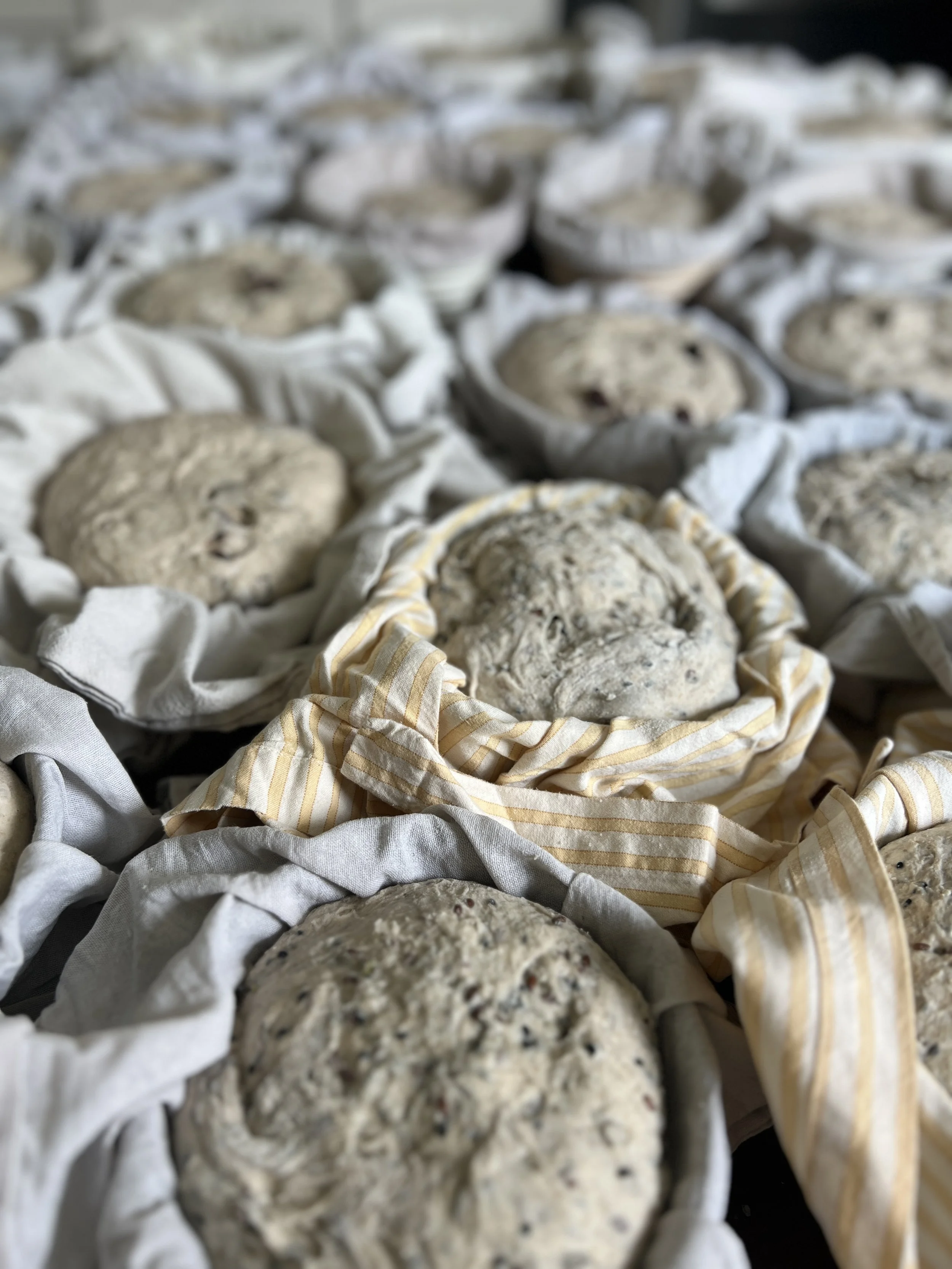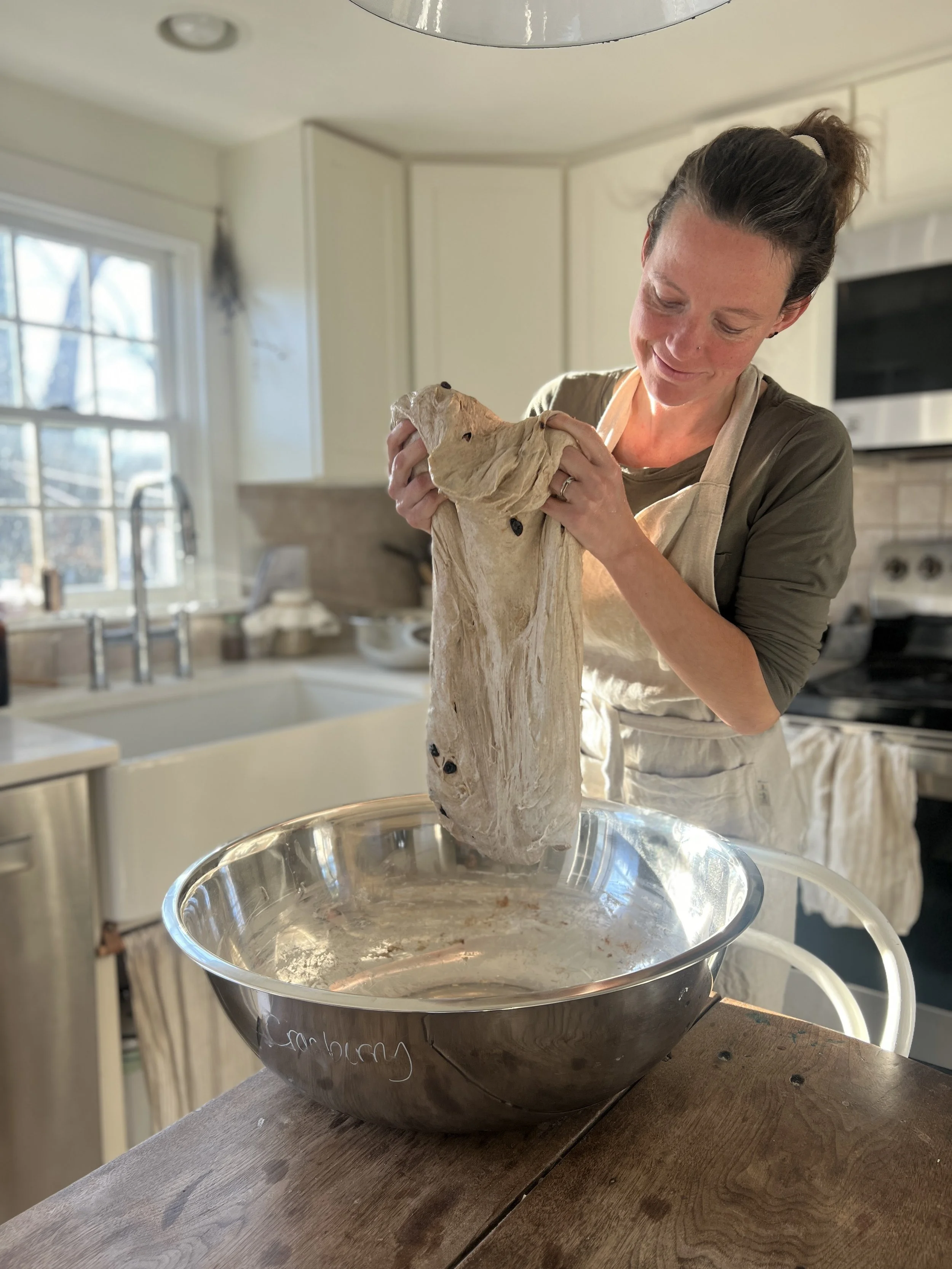The Surprisingly Long Journey from Flour to Farmer’s Market.
Ever wondered about the backstory of the bread you picked up at the market—or snagged from the porch on a Tuesday?
Because yes, even bread has a backstory. (At least the good ones do.)
Around here, each loaf starts taking shape 2–3 days before you ever lay eyes—or hands—on it. The whole thing kicks off when I feed my sourdough starter.
“What’s a sourdough starter?” you ask. Excellent question.
It’s a living culture of flour and water—kind of like a bread pet… or Tamagotchi—that replaces commercial yeast in the baking process. This is the old-school way of making bread, and it’s part of what gives sourdough its depth of flavor and signature texture.
Once I feed the starter, I keep a loose eye on it as it slowly doubles in size over several hours. Do I just sit and watch it? No. (Well… sometimes.) But more often, I’m off tending flowers, prepping other doughs, or getting some sleep if it’s an overnight rise.
Once the starter is bubbly and ready, it’s time to mix the ingredients that will eventually become your loaf.
Sourdough doesn’t need aggressive kneading like yeasted doughs.
Instead, I use a method called stretch and fold: over several hours, I gently stretch the dough and fold it over itself. It’s a slower process, but it builds strength and structure without overworking the dough.
If it’s a flavored loaf (like Jalapeño Cheddar or Seeded), all those delicious add-ins are folded in at this stage too.
Then it’s shaping time.
No one wants a bread blob, so the dough gets gently shaped and placed into a proofing basket, then tucked into the fridge for its final rest.
This long, cool fermentation—anywhere from 12 to 24 hours—deepens the flavor and improves the texture.
When it’s time to bake, the dough comes out, gets dusted with flour, and I score it with a lame (basically a fancy bread razor) to add those pretty designs you see on top.
Then it’s into the oven…
And off to the market (or the porch)...
And finally—to you.
It’s a slow, hands-on process. But it creates bread that’s not just better tasting—it’s easier to digest, naturally preserved, and full of character.
So, yes—it takes a little more effort.
But to me? It’s so worth it.
How about you?



